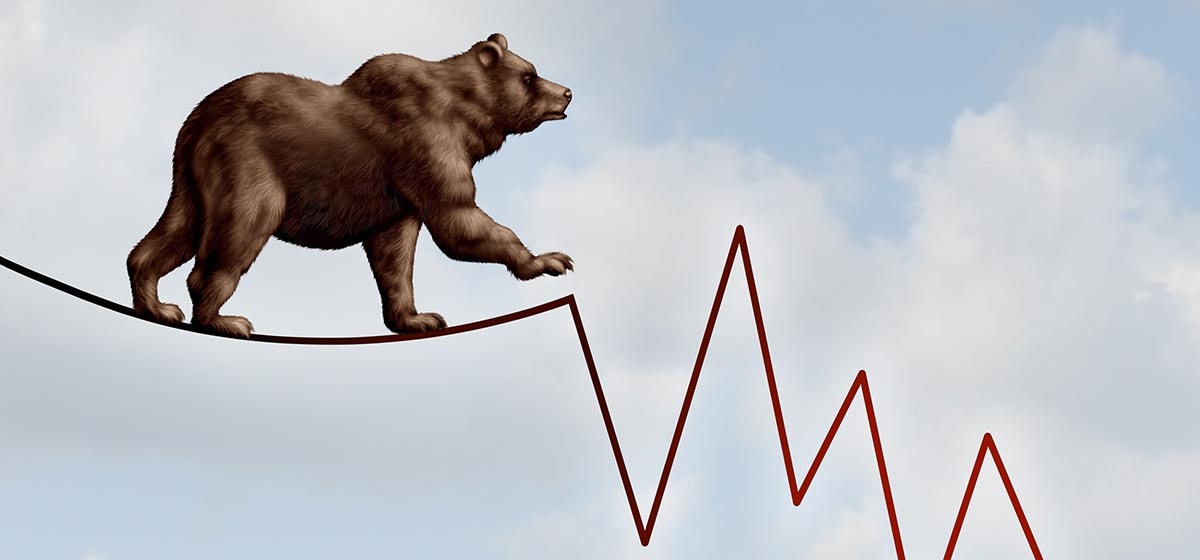Capital Preservation Paul, Part V

So far in our increasingly exciting investment contest, it’s been a positive experience all around. For the first three years the capital markets rose relentlessly: a modestly positive first year followed by two terrific Bull Market years. But things are about to change.
Now, in Year 4 of our contest, the good times seem like an ancient memory. The equity markets dropped so dramatically in Year 4 that even well-diversified portfolios declined 20%. In other words, Year 4 was very similar to 2008, when stocks dropped roughly 50%, causing even broadly diversified, well-managed portfolios to lose a fifth of their value.
It was Lauren Buffett’s older brother who famously said, “It’s only when the tide goes out that you learn who has been swimming naked.” In other words, during Bull Markets everybody looks good and it’s only during the subsequent Bear Market—“when the tide goes out”—that we can see who screwed up.
But actually, as I pointed out last week, the mistakes investors make during Bull Markets are obvious while they’re being made. As Lauren Buffett less famously but more accurately says, “We don’t have to wait for the ebb tide to spot the skinny dippers.”
In any event, let’s turn to our valiant competitors and see who’s wearing a bathing suit and who’s in dishabille.
Lauren Buffett wasn’t expecting a terrible Bear Market in Year 4, but she was almost ideally positioned for it. We will recall that, as equity prices rose inexorably in Year 3 of our contest, Lauren began to unload stocks. She loved XYZ Inc. as a company, for example, but she only loved it as an investment when it could be bought for 13 times earnings, which is what she paid. Near the peak of the Bull Market, XYZ was selling for 33 times earnings, and Lauren was happy to sell it at that price. She did the same with so many other good companies that had become bad investments that by the end of Year 3 her equity allocation, originally 65%, had dropped to 50%. Not only that, but the equities Lauren continued to own, and the managers she continued to use, were all value-oriented, so they didn’t become as over-valued as growth stocks. Lauren’s equity portfolio dropped about 40% in Year 4, but that was well below the 50% drop that hit the broad market. As a result, in Year 4 Lauren’s overall portfolio declined 18%, leaving her with a value of $113,867.
Patient Patty was well aware that a nasty Bear Market was underway because, after all, she reads the newspapers and can’t help but overhear the whining going on around the water cooler at the office. What did she do about it? Nothing, of course, because she doesn’t look at her portfolio. She didn’t get all excited and sell bonds to buy more stocks, and she didn’t, horror of horrors, begin buying stocks on margin. If she’d looked at her portfolio in Year 3 and saw how well it was doing, how just about every stock went up and up just about everyday, she might have been tempted to do something dumb. So she avoided temptation via the simple expedient of behaving as though she didn’t even own a portfolio. If Patty had looked at her portfolio she would have noticed, back in Year 3, that her equity allocation had risen inexorably from 65% to 80%, thanks to the Bull Market. But of course she didn’t, and she didn’t rebalance back to 65%, either. When the Bear hit her equities dropped 45% in value, not quite as bad as the overall stock market. But since she had such a high equity exposure, her overall portfolio lost 36% and her year-end value fell to $89,821.
Typical Tom had definitely forgotten his bathing suit. During the final, explosive year of the Bull Market—Year 3 of our contest—Tom concluded that this was a once in a lifetime opportunity to become fabulously rich. He sold almost all his bonds to buy stocks, and after that he began buying stocks on margin. His equity target of 65% was no more than a distant memory, and by the end of Year 3, 90% of Tom’s portfolio was in stocks. Tom’s only regret at that point was that it wasn’t 100%. Reality—in the form of the Year 4 Bear Market—crashed down on Tom like a nuclear power plant in the path of a Japanese tsunami. His stocks lost 55% of their value and, since 90% of his portfolio was in stocks, Tom’s capital took a gigantic hit. At the end of Year 4, Tom’s portfolio sits at just $69,003.
Through the first three years of our contest, poor old Capital Preservation Paul was bringing up the rear. He was languishing in a distant last place and was beginning to have fantasies about what he would do to his expensive financial advisor at their next quarterly meeting. As we will recall, Paul hadn’t participated in the Bull Market to the same extent as the other contestants, and during the last speculative phases of the Bull Paul had begun reducing his equity exposure and staying with cautious managers and value stocks. He thus missed out on the final phases of the Bull, but he also made himself a much smaller target for any Bear Markets that might be lurking around the corner. The Bear arrived, all right, but by that time Paul had only 60% of his portfolio in stocks and those were conservative stocks. Even so, he lost 40% of his equity value and 24% of his total capital. Paul finished Year 4 with $101,725.
It’s amazing what a difference a Bear Market can make. At the end of Year 3 Patty, Lauren and Tom were all in a tight race for the lead, while Paul was decidedly stinking the place up. But after one measly Bear Market Paul has vaulted past Tom and Patty and finds himself in second place. True, Lauren is way ahead, a distant dot on the far horizon, but Paul is now besting two of his three competitors. And as Meat Loaf says, “two out of three ain’t bad.”
With one year remaining in the contest, the standings look like this:
Lauren: …………………………………. $113,867
Paul………………………………………. $101,725
Patty………………………………………. $89,821
Tom……………………………………….. $69,003
Stand by for the Final Four results next week.





